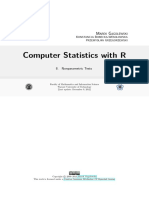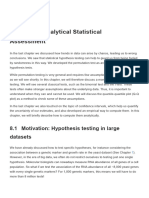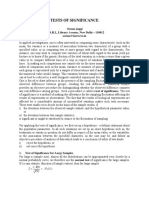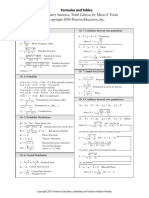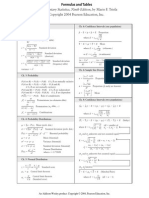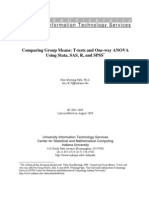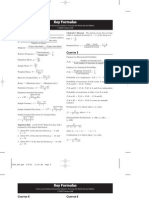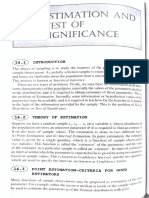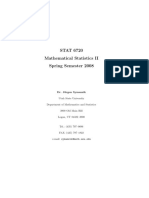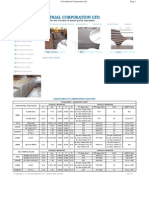0% found this document useful (0 votes)
26 views35 pages04 Testing
The document discusses hypothesis testing, including definitions of null and alternative hypotheses, types of errors, and the Neyman-Pearson paradigm. It covers various examples and theorems related to hypothesis testing, including uniformly most powerful tests and generalized likelihood ratio tests. Additionally, it addresses concerns about hypothesis testing and methods for assessing goodness of fit, including graphical methods and probability plots.
Uploaded by
Chelsie TaoCopyright
© © All Rights Reserved
We take content rights seriously. If you suspect this is your content, claim it here.
Available Formats
Download as PDF, TXT or read online on Scribd
0% found this document useful (0 votes)
26 views35 pages04 Testing
The document discusses hypothesis testing, including definitions of null and alternative hypotheses, types of errors, and the Neyman-Pearson paradigm. It covers various examples and theorems related to hypothesis testing, including uniformly most powerful tests and generalized likelihood ratio tests. Additionally, it addresses concerns about hypothesis testing and methods for assessing goodness of fit, including graphical methods and probability plots.
Uploaded by
Chelsie TaoCopyright
© © All Rights Reserved
We take content rights seriously. If you suspect this is your content, claim it here.
Available Formats
Download as PDF, TXT or read online on Scribd
/ 35



